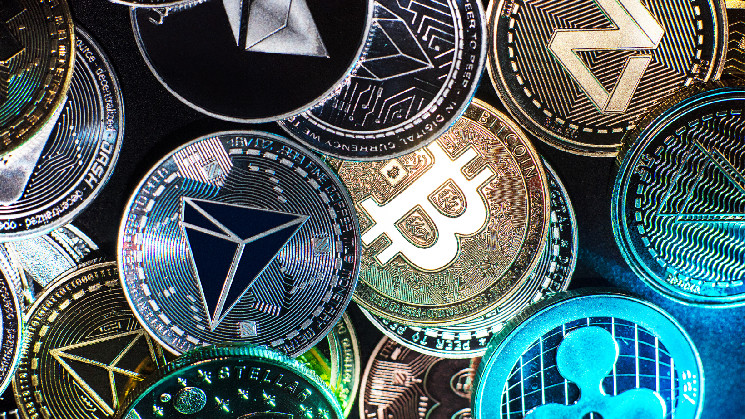During the 2018-19 crypto winter, skepticism and reluctance were the norms among financial institutions regarding direct engagement with cryptocurrencies. The volatile nature of tokens, coupled with regulatory uncertainties, fostered an environment of caution. But as we edge closer to 2024, there’s a discernible change in the air.
Tokenization is increasingly being viewed as a palatable option for governments and regulatory bodies alike, with world governments exploring the benefits of blockchain technology, such as enhanced liquidity, fractional ownership and global accessibility, without full exposure to the volatility of cryptocurrencies.
For the first time, governments around the world find themselves required to make changes to their respective regulations, if they wish to leverage blockchain technology that will stand to benefit them in the future.
A multi-trillion market by 2030
Real-world assets are predicted to be a key driver of digital asset adoption. Over the last year, several established financial powerhouses have embraced the notion of tokenizing real-world assets, incorporating ownership of valuable assets such as precious metals, art and real estate onto the blockchain. A report by Boston Consulting Group predicted that by 2030, the tokenization of assets in general is going to be a multi-trillion dollar market.
In the face of market volatility, tokenized real-world assets have emerged as a sought-after hedge, offering stability and resilience during times of market turbulence, an enticing prospect for investors seeking to safeguard their portfolios. The renewed interest isn’t confined to private, closed ecosystems. Banks and financial powerhouses are increasingly exploring the use of tokenized financial instruments within institutional decentralized finance frameworks. What’s remarkable here is the choice of infrastructure: Many are opting for public blockchains. This decision underscores a growing confidence in the security and potential of these decentralized networks, a stark contrast to the apprehension witnessed a few years ago.
In fact, a research report by Bank of America published this year concluded that the tokenization of real-world assets, such as commodities, currencies and equities, was a “key driver of digital asset adoption.” BofA analysts Alkesh Shah and Andrew Moss wrote in the report that “though we are only in the first innings of a major change in infrastructure and applications, tokenization can reshape how value is transferred, settled and stored” across all industries.
This industry sentiment has been brewing for quite some time. In October last year, Hamilton Lane — an investment-management firm with US$824 billion in assets under management and supervision — announced plans to tokenize three of its funds under a partnership with digital-assets securities company Securitize.
Of course, we’re still quite a way off from total digital asset acceptance. But we are witnessing a shift in how real world assets are being viewed by the world governments and regulators. Historically, real world assets have been forced to sit within the limitations of current regulations. In the last couple of months, however, we are witnessing a shift as jurisdictions around the world have been forced to consider regulatory changes in order to be able to benefit and/or launch their own real world assets for their own needs.
With the number of crypto enforcement actions having risen over the years, companies will need to demonstrate inherent value in order to withstand regulatory scrutiny. Tokenized real-world assets will also likely necessitate the creation of robust, scalable infrastructure designed to coalesce with the traditional financial ecosystem versus trying to replace it. As we progress in this direction we are going to need more governments who support the building of the missing pieces that are key in connecting current Web2 to Web3.
Government as pioneers
Examples of this growing trend to support tokenization can be witnessed in Asia, where governments such as Hong Kong and Thailand, are not just acknowledging its potential for real-world assets — policymakers are actively shaping its use. By reforming regulations to better accommodate the tokenization of real-world assets, these governments are laying the groundwork for innovation and growth that will go on to serve as examples for other governments.
Take the example of Hong Kong. Historically Hong Kong has limited the sale of new northern territories to developers within the country, but now wants to open the sale of lands in the northern territories to further global partners, not limited to the in-house Hong Kong developers. This would have meant categorizing the sale as a collective investment scheme. However, the Hong Kong government aims to broaden participation to global partners, planning to pilot this through asset tokenization. This approach would not only widen the investor pool but also lower entry barriers by allowing fractional ownership.
Thailand’s government is also looking at integrating real-world assets with blockchain technology. Following a recent political shift, the Thai government has been keen on distributing tokens to its citizens. Unlike Hong Kong, Thailand’s primary hurdle isn’t regulatory but technical. The government can expedite legal processes, but the challenge lies in executing the technical aspects of airdropping tokens. To do this they are exploring pilot projects and collaborating with layer-1 and layer-2 blockchain platforms to resolve these technicalities.
We are now at a point in the evolution of Web3 that we can confidently state that blockchain technology will, at some point, be integrated into our daily lives. Whether or not the average person is aware of it is somewhat irrelevant. We are currently witnessing a global trend where governments are earnestly seeking blockchain integration to unlock new revenue streams and reduce costs, with the focus primarily on the utility and applications of the technology itself.
Real estate, fine art, commodities and other real-world assets are a perfect example of a use case that can benefit from tokenization. Whether it’s in the next year, the next five years, or in the next 10 years, recognizing and harnessing this immense opportunity could be incredibly significant for the future of finance itself.
 forkast.news
forkast.news
